Aassits the lateral pterygoids in moving the jaw side-to-side. The medial pterygoid muscle has a superficial and a deep head which arise from different areas of the jaw.
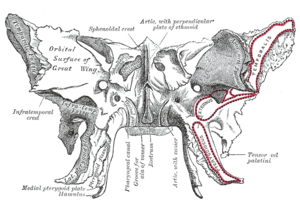
Pterygoid Processes Of The Sphenoid Wikipedia
A broad thin plate that forms the lateral part of the pterygoid process and gives attachment to the lateral pterygoid muscle on its lateral surface and to the medial pterygoid muscle on its medial surface.
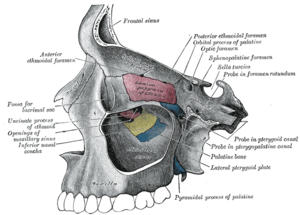
. Tuberosity of maxilla and pyramidal process of palatine bone. The medial pterygoid plate is narrower and longer than the lateral. ACTION Elevates the mandible and assits in closing the jaw.
The medial pterygoid inserts on the pterygoid tuberosity of the mandible and medial inner surface of the mandibular ramus. In patients with identified isolated pterygoid plate factures a dedicated CT of the mandible may be indicated to assess for associated mandibular fracture even in patients whose clinical. A long narrow plate that forms the medial part of the pterygoid process terminates in the pterygoid hamulus and forms with its lateral.
The pterygoid fovea is located on the condylar. They supplied the tensor veli palatini. Force transduction through the pterygoid muscles.
A variable pterygospinous process on its irregular posterior border is connected by a ligament sometimes ossified to the sphenoid spine 1. The lateral pterygoid plate of the sphenoid or lateral lamina of pterygoid process is broad thin and everted and forms the lateral part of a horseshoe like process that extends from the inferior aspect of the sphenoid bone and serves as the origin of the lateral pterygoid muscle which functions in allowing the mandible to move in a. Although having different origins both heads insert on the inner.
The superficial head is attached to the maxillary tuberosity and the pyramidal process of the palatine bone. Up to 10 cash back The medial branches were directed forward and ran between the lateral pterygoid plate and the tensor veli palatini. Called also lateral pterygoid plate.
It has two heads of origin. From their origin the muscle fibers run posteroinferiorly and laterally surrounding the lower fibers of the lateral pterygoid muscle. The medial pterygoid also elevates.
Each process consists of a medial pterygoid plate and a lateral pterygoid plate the latter of which serve as the origins of the medial and lateral pterygoid muscles. The deep head is the major component and is attached to the medial aspect of the lateral pterygoid plate of the sphenoid bone. The suspected mechanism is due to force transduction through the medial and lateral pterygoid muscles when acute displacing force is placed on the mandible.
Called also lateral pterygoid plate. Origin and insertion of medial pterygoid by Anatomy Next Action. It curves lateralward at its lower extremity into a hook-like process the pterygoid hamulus around which the tendon of the Tensor veli palatini glides.
The medial pterygoid along with the masseter allows the jaw to move in a vertical direction as it contracts and relaxes. - CT features of isolate pterygoid fracture. It has a second slip of origin from the lateral surfaces of the pyramidal process of the palatine and tuberosity of the maxilla.
Some of them extended to the soft palate and the lateral wall of the boundary region between the nasal cavity and the nasopharynx. Moreover what artery supplies the medial and lateral pterygoid muscles. Medial pterygoid muscle is attached towards medial part of the lateral pterygoid plate.
Medial surface of the lateral pterygoid plate C. The lateral surfaceof this plate forms part of the pterygoid fossa the medial surface constitutes the lateral boundary of the choana or posterior aperture of the. The deep head of the medial pterygoid inserts on which of the following.
Deep head medial side of lateral pterygoid plate and fossa between medial and lateral plates. Lateral surface of the medial pterygoid plate E. The medial pterygoid is a thick quadrilateral muscle.
In patients with identified isolated pterygoid plate factures a dedicated CT of the mandible may be indicated to assess for associated mandibular fracture even in patients whose clinical examinations have had. The medial pterygoid plate or medial pterygoid lamina of the sphenoid is narrower and longer than the lateral pterygoid plate. INSERTION Medial aspect of angle of mandible.
Medial pterygoid muscle consists of two heads. Medial pterygoid is a thick quadrilateral muscle that connects the mandible with maxilla sphenoid and palatine bones. The spaces separated the medial and lateral plate are pterygoid.
Lateral pterygoid muscle has its the lower part connect to the lateral part of the lateral pterygoid plate. Unilateral no involvement of medial plate Vertical fracture of lateral pterygoid plate - Proposed mechanism. The suspected mechanism is due to force transduction through the medial and lateral pterygoid muscles when acute displacing force is placed on the mandible.
The maxillary tuberosity separated from the medial and lateral pterygoid plates during the procedure was grouped into the disjunction group 24 of 30 80 and the pterygoid plates fractured were grouped into the fracture group 6 of 30 20. The deep head of the muscle originates from the medial surface of the lateral pterygoid plate of the sphenoid bone. The medial pterygoid plate or medial pterygoid lamina of the sphenoid is narrower and longer than the lateral pterygoid plate.
Inferior border of the anterior 23rds of the zygomatic arch B. The lateral pterygoid inserts on the pterygoid fovea of the mandible. - An isolated lateral pterygoid plate fracture suggests the presence of a mandible fracture.
A broad thin plate that forms the lateral part of the pterygoid process and gives attachment to the lateral pterygoid muscle on its lateral surface and to the medial pterygoid muscle on its medial surface. Each pterygoid process projects inferiorly from the junction of the body and greater wing of the sphenoid bone and bifurcates into a medial pterygoid plate and a lateral pterygoid plate. The thickness of the pterygomaxillary region T was significantly greater in the disjunction.
The smaller superficial head has its origin mainly from the maxillary tuberosity with some fibers arising from the pyramidal process of the palatine bone. Lateral surface of ramus and angle of mandible Origin Superficial part. The superior head of the lateral pterygoid originates from the infratemporal surface and crest of the greater wing of the sphenoid.
It curves lateralward at its lower extremity into a hook-like process the pterygoid hamulus around which the tendon of the Tensor veli palatini glides. The medial pterygoid muscle is a thick and square shaped muscle. It belongs to the group of masticatory muscles along with the lateral pterygoid masseter and temporal muscles.
The lateral pterygoid muscle via its lower head separates the two distinct heads. The inferior head of this muscle originates from the lateral surface of the lateral pterygoid plate of the sphenoid bone. At the inferior tip of the medial pterygoid plate is the small hook-shaped process the pterygoid hamulus.
The lateral surface of this plate forms part of the pterygoid fossa the medial surface constitutes. Both pterygoids protract the mandible and move it from side to side during chewing. These movements maximize the efficiency of the teeth while chewing or grinding foods of various consistencies.
Superior pharyngeal constrictor is attached towards inferior end of the medial pterygoid plate. Medial pterygoid muscles arise from the lateral pterygoid plates of the sphenoid bone and insert on the mandible. The medial pterygoid plate is narrower and longer while the lateral pterygoid plate is broad thin and everted.
The larger deep head originates from the medial surface of the lateral pterygoid plate and the pyramidal process of sphenoid bone. It curves lateralward at its lower extremity into a hook-like process the pterygoid hamulus around which the tendon of the Tensor veli palatini glides. The lateral pterygoid allows the jaw to move in a horizontal direction during mastication.
It arises from the medial surface of the lateral pterygoid plate and the grooved surface of the pyramidal process of the palatine bone. Medial surface of ramus and angle of mandible D.

Anatomy Trains Australia Nz Friday Anatomy Fact The Beautiful Pterygoids With The Coolest Name I Have A List Of Favourite Muscles And This One Is Top Of My List Along
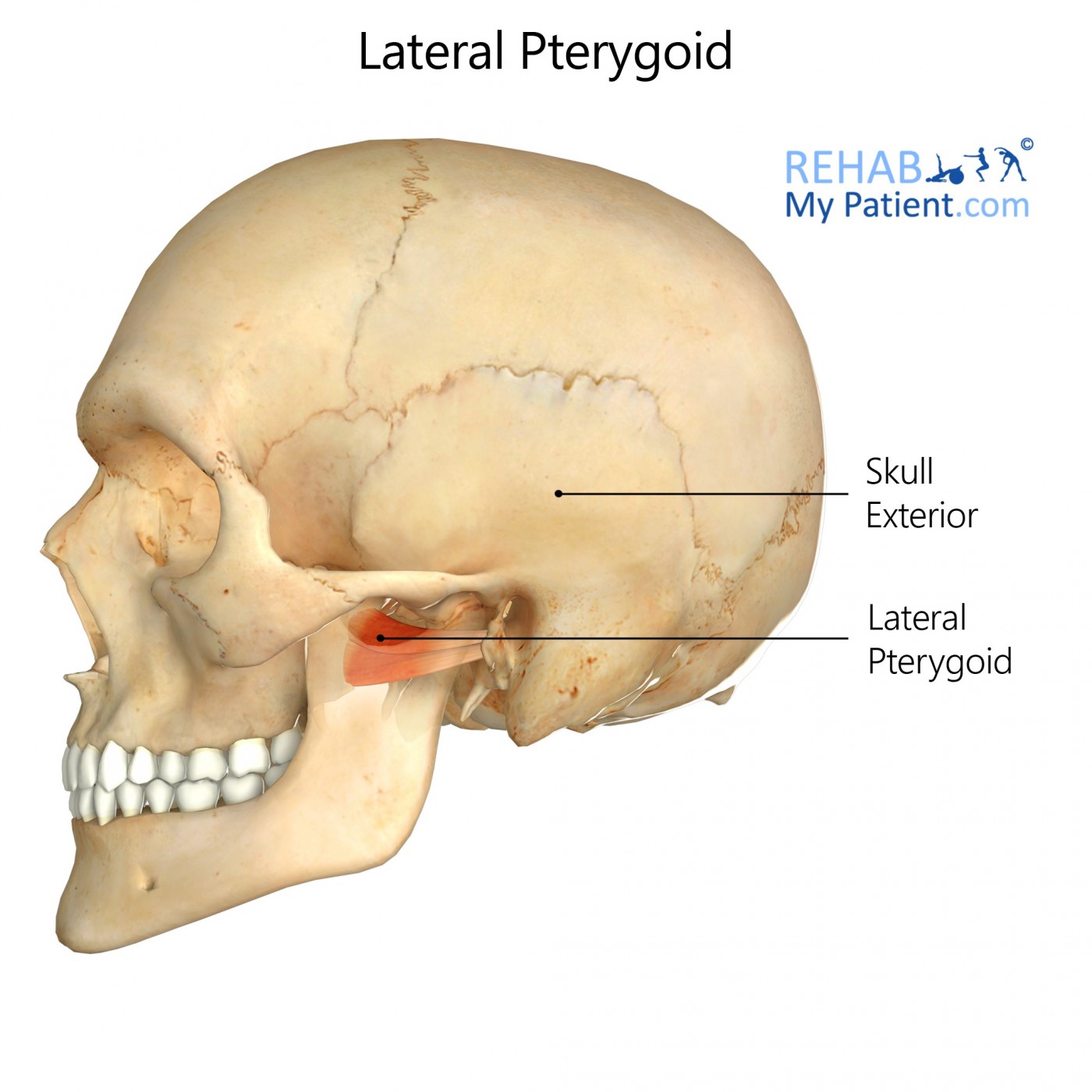
Lateral Pterygoid Rehab My Patient

Infratemporal Fossa Lo Pterygoid Plates Youtube

The Art And Science Of Kinesiology Very Cool View Of The Pterygoid Muscles A Posterior View Of The Lateral And Medial Pterygoids Muscles Of The Tmj For Mastication They Both Attach

Pterygoid Processes Of The Sphenoid Wikipedia
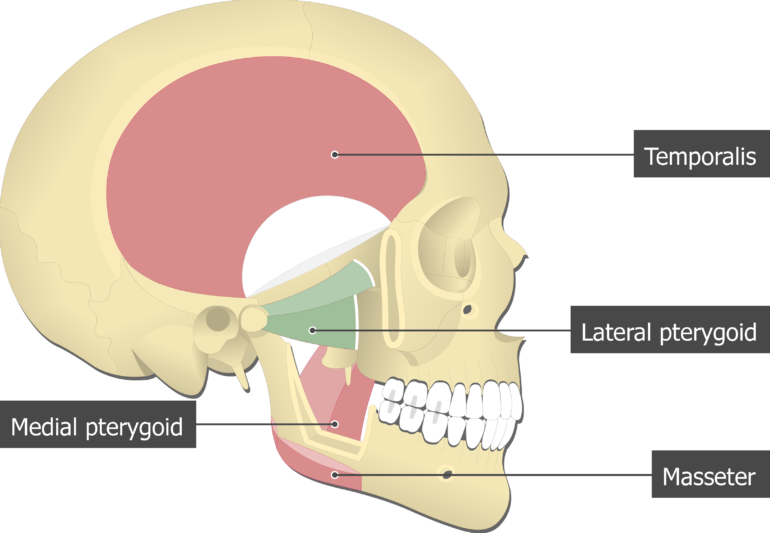
Lateral Pterygoid Muscle Attachments Actions Innervation
:background_color(FFFFFF):format(jpeg)/images/library/14110/Pterygoid_muscles.png)
Medial And Lateral Pterygoid Muscle Anatomy And Function Kenhub
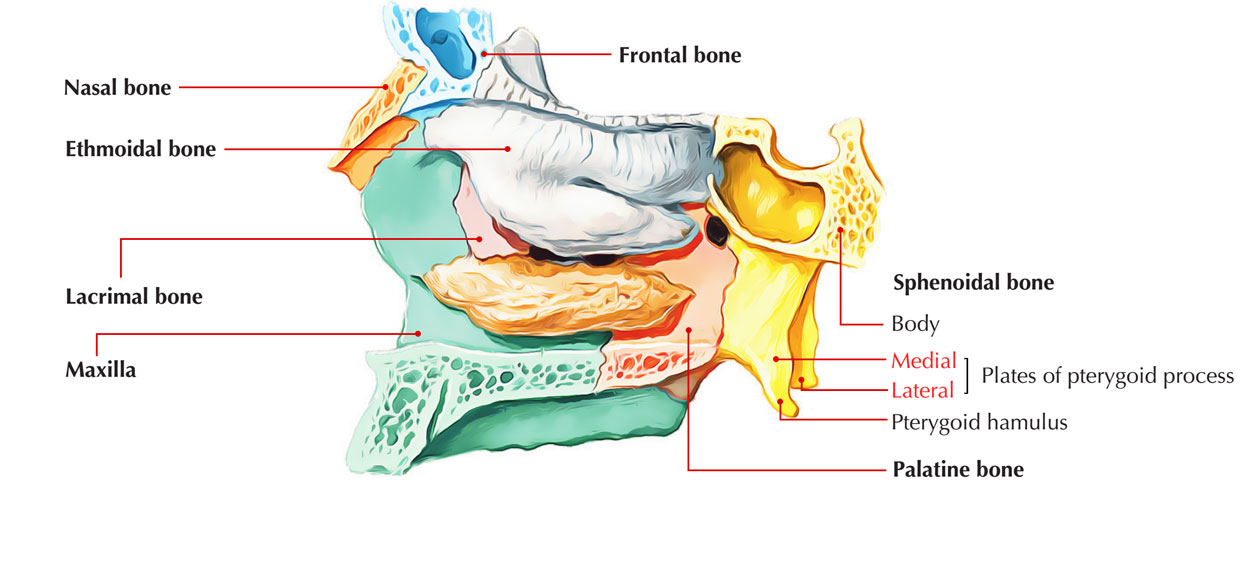
0 comments
Post a Comment